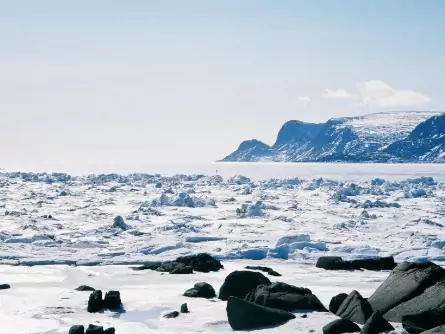
Sijja - Shoreline fast ice
Indigenous Knowledge
Sijja ᓯᔾᔭ
'ᑕᒪᒃᑯᐊ ᓯᔭᑦᓴᐃᑦ ᓯᑯᓯᒪᔪᑦ ᓄᓇᒥ ᐅᕝᕙᓘᓐᓃᑦ ᕿᑭᖅᑕᓂ ᖃᐃᙴᑉ ᑭᓪᓕᖓᓂ; ᓯᔾᔭᑦᓴᐃᑦ ᑭᒍᓂᖓᓂ ᐅᑭᐅᕈᖅᐸᓪᓕᐊᑎᓪᓗᒍ ᐃᔾᔪᓯᕙᓪᓕᐊᓲᖅ ᐃᖅᑳᒍ.
Tamakkua sijatsait sikusimajut nunami uvvaluunniit qikiqtani qainnguup killingani; sijjatsait kiguningani ukiuruqpalliatillugu ijjusivalliasuuq iqqaagu.
A rough shoreline ice condition found along the edge of land (qainngu), along mainland or island coastlines; a later seasonal stage of sijjatsait that gets thicker from the bottom.'
(Kinngait, South Qikiqtaaluk, Kinngait Sea Ice Glossary 2023: 19)
Related team
Sijjatsait ᓯᔾᔭᑦᓴᐃᑦ
'ᑕᒪᒃᑯᐊ ᓯᔾᔭᑦᓴᐃᑦ ᖃᕝᕕᐊᓯᒪᔪᑦ ᑎᓂᓐᓂᐅᑉ ᖄᖓᓂ; ᒪᓃᓐᓂᖓ ᓯᓈ ᓯᑰᑉ ᑕᐃᒪᐃᓚᕿᕙᑦᑐᖅ ᐅᓕᓐᓃᑦ ᐊᔾᔨᒌᑉᐸᖏᒻᒪᑕ, ᐱᐊᑦᑐᐊᓗᒃ ᑎᓂᙵᑎᓪᓗᒍ ᐊᒻᒪᓗ ᐱᕙᓪᓕᐊᓕᕋᑖᖅᑎᓪᓗᒋᑦ ᒪᐅᔭᕋᕐᕕᑦᓴᐃᑦ.
Tamakkua sijjatsait qavviasimajut tininniup qaangani; maniininga sinaa sikuup taimailaqivattuq ulinniit ajjigiingimmata, piattualuk tininngatillugu ammalu pivallialirataaqtillugit maujararvitsait.
An early stage of consolidated ice formation along the shoreline (sijja), it is the foundation of the shoreline ice; rough shoreline ice due to tidal variations, it can be slippery at low tide and at the early stage you can ice hop on them.' (Kinngait, South Qikiqtaaluk, Kinngait Sea Ice Glossary 2023: 19)
Western Knowledge
Fast Ice
'Sea ice which forms and remains fast along the coast, where it is attached to the shore, to an ice wall, to an ice front, between shoals or grounded icebergs. Vertical fluctuations may be observed during changes of sea-level. Fast ice may be formed in situ from sea water or by freezing of floating ice of any age to the shore, and it may extend a few metres or several hundred kilometres from the coast. Fast ice may be more than one year old and may then be prefixed with the appropriate age category (old, second-year, or multi-year). If it is thicker than about 2 m above sea-level it is called an ice shelf. (Fast ice seems most closely associated with tuvaq, but also relevant to sijja based on shoreline fast ice formations).' (Inuit Siku Atlas; adapted from MANICE)
Main profile photo credit: Inuit Siku Atlas Second photo credit: Gita Ljubicic Third photo credit: Inuit Siku Atlas
.svg)